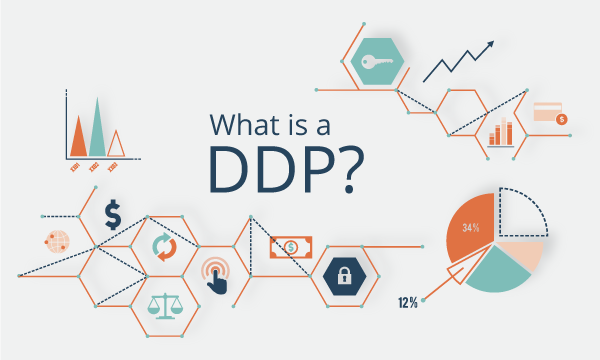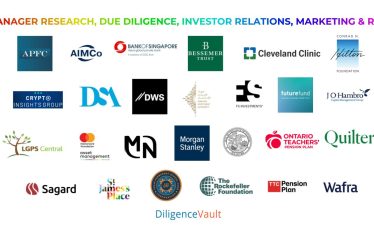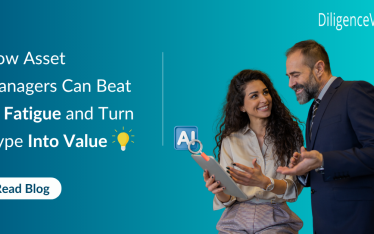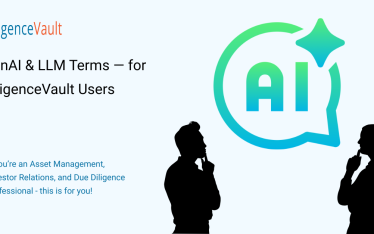The digital diligence platform (DDP) is a foundational tool for an asset allocator or investor. At DiligenceVault, we think it’s an exciting category in the industry! It’s more than one of those Saas-y fintech acronyms or another CRM tool, and merits an exploration of its own. Let’s explore why there’s a need for a DDP and begin with some simple questions that investors may want to know:
- How can I track the status of my ongoing manager reviews and systematically identify areas of risk?
- How do I analyze the responses of different managers’ diligences side by side and compare them over time without enduring a time-consuming copy and paste marathon?
- How do I answer fundamental questions such as – What percent of my hedge fund managers have an ESG or diversity and inclusion policy?
- How do I demonstrate good governance and a robust monitoring framework to my stakeholders?
While a few investors are equipped to use their existing tools to get answers to these queries, it requires many steps and manual workarounds to achieve them, and it may introduce errors in the process. It’s very common for manager research, operational due diligence, compliance, diversity, risk and finance teams to pull information from disparate sources (questionnaire tools with multiple logins, searching for word documents in emails, Excel or Word questionnaires, accessing different databases) and then merge it before analysis can begin. Anyone who has been in an allocator seat has lived through this. This is an inelegant and inefficient process prone to errors and omissions.
There is a better way with a DDP. A DDP centralizes communication, drives towards insights from unstructured data, and is complementary to existing many of the technologies that both investors and asset managers are familiar with or are already using. The idea is for an allocator’s data to be connected to their existing investment process, collaborative in nature, and conducive to these strong analytics. Let’s explore.
Connection
The existing process requires investors to screen money managers, perform in-depth informational requests and surveying on those managers, and then chase follow-ups, all prior to an investment decision. Then, there is the ongoing monitoring phase afterwards. The tools that a digital diligence platform deploys must have cohesion with an allocator’s existing investment process.
After that, the manual process for investors to engage with those managers begins. It is at this step that a transformational change occurs and where a DDP advantages those who adopt the technology. The DDP brings automation to this entire process for both parties. Further, instead of word document questionnaires or static forms, allocators start with a digitized due diligence questionnaire.
Investors drill down to the answers they want from managers faster and a DDP should utilize easy-to-use features to quickly compare managers against their peers or to review their answers against previous vintages or fund offerings.
Once the answers are in place, then the fun collaboration can begin.
Collaborative
Instead of the traditional method of sending a questionnaire from an investor to a manager with limited visibility across the team’s numerous requests until the questionnaire is returned, a DDP brings transparency to the process. The technology brings the questionnaire to a diligence platform and promotes stronger internal and external real-time collaboration.
For investors, there are benefits of efficiency and time savings across their team’s requests. The data is transparent and centralized. Everyone from the research analyst to the CIO, or members of the IDD and ODD teams have instant access to the same information easily. At the same time, a DDP is a simpler platform for managers to centralize content and enlist subject matter experts across the firm to ensure timeliness and efficiency when responding to investor requests.
Ultimately, the focus of a DDP for investors is to help with manager screening and yield better outcomes.
Analytical
To yield better outcomes requires reducing time on the data collection process and granting more time for analysis. The latter is unlocked by eliminating the manual copy and pasting of emails, questionnaires, and check-ins with different managers. However, a DDP also acts as a centralized location for all data in a digital-first platform. With questions, answers, and historical data structured and retained in a DDP, there is an ability for an investor to access the data quickly and consistently across time periods or to use scoring for more efficient follow-ups in ongoing monitoring. Problematic answers can be flagged as they come in, and changes can be analyzed and tracked between diligences. Data can be called up within a DDP repository and answers to questions that previously required multiple documents can be reviewed with a few clicks. Of course, if more robust off-platform analysis is necessary, there has to be self-service export functionality and API integrations.
So what?
The benefits of a DDP are clear. Managers can be researched and monitored more frequently with the same resources or investors can use a DDP to prioritize which managers merit more follow-up with flagging and scoring intelligence. The institutional memory allows for advanced analytical techniques to be employed and for action items to be followed up with before they become compliance issues.
Over the next several posts, DiligenceVault will cover how a DDP contrasts with this ecosystem and how it may integrate or work with an allocator’s existing collection efforts, RMS or CRM system, and/or existing file storage. Most importantly, we’ll discuss how a DDP integrates this work with the responder as well. Then, we’ll dive into how to select the best DDP solution and how to decide whether to buy or build a DDP solution. To learn more about how DiligenceVault is working as a DDP offering for investors (or managers) in this two-sided ecosystem, schedule a demo.



